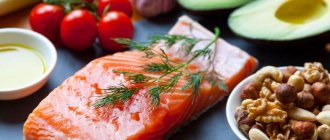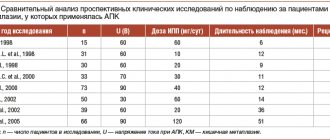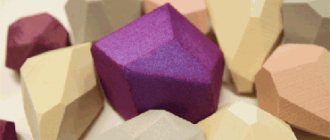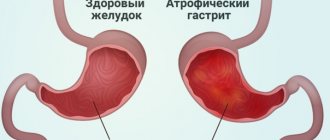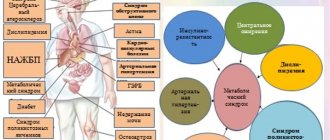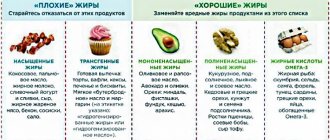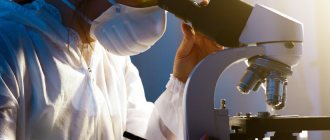Kidney stones are smaller than the head of a pin. Almost invisible to the naked eye. But the pain from such a stone can be unbearable.
Kidney stones are formed from various salts and crystals. There are five main types:
- calcium oxalate,
- calcium phosphate,
- stuvite,
- urate and cystine.
Calcium oxalate stones are the most common.
Kidney stones. What you need to know and how to treat correctly
Life story...
As an introduction, here is a real incident that happened several years ago...
The ambulance was flying through the city at night, cutting through the darkness with its headlights. An ordinary challenge that doesn’t stand out in any way from a series of hundreds of others. Male, forty-two years old, acute pain in the lumbar region. The doctor looked at the call sheet, weighing a possible diagnosis in his head. The car ran its headlights along the wall of the house, turning into the yard. In the faint light of the lantern one could see a well-groomed courtyard with a children's swing and a flowerbed. The ambulance stopped at the right entrance. Grabbing his suitcase, the doctor hurriedly ran up the steps and dialed the number on the intercom. The elevator took him to the sixth floor, where a pretty, fragile woman was already waiting for him, chillyly wrapped in a coat thrown over her shoulders.
The doctor entered the apartment, hastily washed his hands and, wiping them with a towel as he went, walked into the room. The man was lying on the sofa, the rumpled sheets indicating that he had apparently recently had a seizure. Now, apparently, the pain had subsided and he, gradually coming to his senses, squinted, trying to see the doctor’s face. The doctor said hello, sat down on the edge of the sofa and, asking the usual questions about complaints, threw back the blanket. The patient's entire abdomen, thighs and back were covered with small bruises. The doctor looked at the man in confusion:
- Who are you? “Wife,” answered the patient. - Is she hitting you? – the doctor asked in complete confusion, glancing sideways at the pretty woman standing next to him. - It stings. - Does it sting? For what?? The patient sighed and weakly waved his hand. “Doctor, he has a kidney stone,” the woman explained. “We were told that if you pinch it, it can come out on its own...
Kidney suffering
People suffering from urolithiasis (KD) say: “If you have not experienced an attack of renal colic, then you do not know what real pain is!” Indeed, kidney stones, as well as inflammatory processes in the organs of the urinary system, cannot be classified as minor diseases.
Normal activity of all organs and systems is possible only if “toxic” metabolic products are promptly removed from the body. This function is performed by the large intestine, liver, skin, but mainly by the kidneys. If the kidneys cannot cope with their function due to illness, the entire body, all organs and systems suffer.
Causes
Urate stones in the kidneys occur due to various circumstances:
- the main factor is a sedentary lifestyle, which in medicine is called physical inactivity;
- fasting or refusing certain foods can trigger the formation of urate stones;
- the use of analgesic drugs of the above standard leads to the fact that they accumulate in the body and change the alkaline environment;
- lack of B vitamins;
- genetic disposition of the organism;
- poor environmental living conditions;
- monotonous diet and consumption of large amounts of animal protein;
- drinking unfiltered water, which leaves a lot of sediment after boiling;
- the presence of bad habits, including drinking large quantities of alcoholic beverages;
You must be extremely careful and lead an active and healthy lifestyle.
Do you like salty foods? Be carefull!
Due to metabolic disorders in the body, conditions are created for the precipitation of salts, from which stones are formed. This disrupts the flow of urine, which, in turn, leads to a disease called urolithiasis.
The formation of stones is facilitated by long-term consumption of foods containing large amounts of mineral salts, as well as stagnation of urine in the urinary tract - kidneys, ureters, bladder. Depending on the composition, the stones differ in their origin. Thus, uric acid (urate) stones are formed from uric acid salts, oxalate stones from calcium oxalate, and calcium phosphate stones from calcium and phosphate salts. Stones can grow to very large sizes, sometimes repeating the outlines of the renal pelvis and having a coral shape.
conclusions
They cause discomfort and interfere with living a normal life and being active.
It is important to treat the body carefully, pay attention to even minor changes and carry out examinations and treatment in a timely manner.
Only a consultation with a doctor will allow you to choose the most appropriate course of treatment for urate stones.
Under no circumstances should you hesitate or delay treatment. This leads to a deterioration in the general condition of the patient, as well as to the development of many other diseases. Everything is so serious that a person may even be left without a kidney.
Even if the patient has completed a course of treatment and got rid of the formations, he needs to adhere to preventive measures. After all, the disease can arise again, but with greater force.
Wandering stones. How to recognize them?
Stones often form in the kidneys, from where they can travel to the ureters and bladder. Manifestations of urolithiasis depend on the location of the stone. Thus, kidney stones cause pain in the lumbar region, usually aching, aggravated by physical activity and, especially, by shaking. Patients, mistaking this pain for so-called “lumbago”, often do not consult a doctor and treat themselves. Meanwhile, stones, remaining in the renal pelvis for a long time, gradually cause its expansion and inflammation of the renal tissue (pyelonephritis), block the outflow of urine from the renal pelvis and can cause an attack of severe pain (renal colic). In this case, nausea and vomiting appear, cold sweat appears, the stomach is swollen, and sometimes the temperature rises. The passage of a stone from the kidney into the ureter is accompanied by increased pain; it radiates to the genitals and groin area; there is a frequent urge to urinate.
Bladder stones cause irritation and inflammation of the bladder mucosa, manifested by frequent painful urination (so-called cramps). During physical activity or walking, the stone can injure the mucous membrane and cause bleeding with corresponding staining of the urine (hematuria). When a stone enters the urethra, an obstruction to the outflow of urine occurs. Stones in both kidneys or ureters can cause complete cessation of urine output (anuria). This is a dangerous complication, since “toxic” metabolic products accumulate in the body, and self-poisoning occurs.
Risk of complications
Like any pathological process, the formation of urate stones progresses, and over time the calculus grows throughout the renal pelvis with processes in each calyx. A more severe disease develops - coral nephrolithiasis, when the gentle dissolution method no longer helps, and treatment of the pathology requires nephrolithotripsy, and in especially severe cases, removal of the affected kidney.
Uric acid deposits often provoke inflammation of the renal tubules (pyelonephritis), as well as the development of acute or chronic renal failure.
Against the background of a high concentration of uric acid, salts are deposited in the joints and a dangerous metabolic disease develops - gout.
There is no need to wait for the body to acquire a whole bunch of complications; modern diagnostic methods make it possible to detect uric acid deposits at the very beginning of their formation.
Uric acid, cystine, oxalate...
As we have already said, kidney stones are very different in structure - uric acid, cystine, oxalate... Determining which mineral you have grown inside is important! At least in order to free yourself from the existing stone and try to avoid the formation of new ones.
Diagnosis of urolithiasis is carried out using ultrasound or intravenous urography. Using intravenous urography, the doctor takes several x-rays of the urinary system. To do this, a radiopaque substance is injected into the bloodstream, which spreads throughout the body until it reaches the kidneys, through which it is discharged through the ureters into the bladder.
Diagnostics
Diagnosis of the disease is carried out by a urologist, who, if necessary, refers the patient to a surgeon. First, a history is taken and the patient is examined. Then the following mandatory studies are prescribed:
- general and biochemical urine and blood tests;
- urography (x-ray examination of the urinary tract);
- Ultrasound of the urinary system.
Additionally, the following may be assigned:
- computed tomography of the kidneys (to assess the size and density of the stone and the condition of the surrounding tissues);
- radionuclide kidney scan (to assess kidney function);
- urine culture for microflora (to detect infection in the urinary system).
Silence is not always golden?
For a long time, the stone may not show itself in any way. But this is not dangerous only in those rare cases when stones can be considered “clinically insignificant” - they are not only “silent”, but also do not impair kidney function for many years. However, everything is for the time being, so such patients need to periodically visit a urologist.
A kidney stone makes itself felt with an attack of renal colic. When it happens depends not at all on its size, as many people think, but on where exactly the stone settled, whether it blocked the outflow of urine and other factors.
Traditional methods for urate kidney stones
Keep in mind that the collections help only against urate stones; for all other types they are useless.
In the presence of uric acid diathesis and urate stones, compositions .
Collection for urate kidney stones No. 1:
- Black elderberry flowers - 3 parts.
- Linden flowers - 3 parts.
- Chestnut flowers - 3 parts.
- Rose hips - 2 parts.
- Parsley fruits - 2 parts.
- Willow bark - 2 parts.
- Birch leaves - 2 parts.
- 3 tablespoons of raw material per 3 cups of boiling water (daily dose), leave in a thermos for 2 hours. Take in equal portions in 4 divided doses half an hour before meals.
Collection No. 2
- Lingonberry leaves - 1 part.
- Parsley root - 1 part.
- Kidney tea herb (pharmaceutical) - 1 part.
- Tansy flowers - 1 part.
- Polygonum herb - 1 part.
- Strawberry leaves - Part I.
- 2 tablespoons of the mixture per 2 cups of boiling water, leave in a warm place for 30 minutes. Take half a glass 3-4 times a day 20-30 minutes before meals.
Collection No. 3
- Walnut leaves - 1 part. Steel root - 1 part. Wheatgrass rhizomes - 1 part. Juniper fruits - 1 part. Golden rod herb - 1 part. Prepare as No. 2. Take 1 glass in the morning and evening.
- Collection No. 4
- Horsetail herb - 1 part.
- Woodruff grass - 1 part.
- Burdock root - 1 part.
- Black elderberry flowers - 1 part.
- Pour 2 teaspoons of the mixture into a glass of boiling water and leave for 1 hour. Take 3 times a day with meals.
Collection No. 5
- Celery rhizome - 1 part. Asparagus root - 1 part.
- Butcher's broom root - 1 part.
- Parsley root - 1 part.
- Fennel fruits - 1 part.
- 4 tablespoons of the mixture in 2 glasses of water, cook for 30 minutes. Take half a glass warm 15-20 minutes before meals 4 times a day.
Collection No. 6
- Birch leaves - 1 part.
- Steel root - 1 part.
- Juniper fruits - 1 part.
- Celandine grass - 1 part.
- Potentilla herb - 1 part.
- Pour 2 tablespoons of the mixture with 2 cups of boiling water and leave for 30 minutes. Drink the freshly prepared infusion warm, 1 glass at night.
To prevent stone formation in the urate variant of urolithiasis during periods of remission, along with infusions, simpler forms can be used - infusions of individual plants.
The most widely prescribed include corn silk (2-3 tablespoons per glass of boiling water, boil for 30 minutes, take a quarter glass 4 times a day before meals), steelhead root, parsley root and herb, celery rhizome with or without herbs, asparagus rhizome.
For preventive purposes, take decoctions of these herbs in reduced concentrations (in average form - 1-2 teaspoons of raw material per glass of boiling water, cook in a bathhouse for 20 minutes, leave for 2 hours, take a quarter glass 3-4 times a day half an hour before meals) ,
Pharmaceutical drugs prescribed for urate nephrolitasis include various citrate mixtures and other metabolic agents produced in the form of powders, tablets or drops (allopurinol, magurlit, blemaren, solimok, urolesan, cystone, etc.), which are taken long-term under the control of urine pH (6-7).
Information taken from the site rusmedserver.ru
Before it’s too late, drink Borjomi!
There is no point in relying on medications that dissolve kidney stones. Today, despite the assurances of various commercials, there are no drugs that can dissolve formed oxalate and phosphate kidney stones (and these are the ones that occur in most patients). Only uric acid stones (urates) can be dissolved, and then only in some cases.
The mineral waters of our resorts can be recommended as a treatment only if the stone is small and can therefore easily be removed from the body. And what you definitely shouldn’t do is go to a resort against the opinion of a doctor who is offering you surgical removal of the stone. Moreover, today very gentle operations are possible.
Shock wave - over stones
ESWL
- Cost: 49,000 rub.
- Duration: 40-90 minutes
- Hospitalization: 1 day in hospital
More details
Over the past 10 years, due to the widespread introduction of modern technologies for removing stones from the kidneys and urinary tract into urological practice, the strategy and tactics of treating this disease have changed significantly. Today, kidney stones can be crushed, and this method - extracorporeal lithotripsy (ESLT) - is widely used in many urological clinics in Russia. It allows you to minimize the severe complications that were observed during open operations. It has become possible to get rid of kidney stones in patients who have had a heart attack, stroke, angina pectoris, coronary heart disease and other diseases.
As already mentioned, extracorporeal lithotripsy has rightfully taken a leading place in the treatment of kidney and ureteral stones. This simple, low-traumatic method of treating stones is the method of choice along with endoscopic and open surgical interventions. The use of extracorporeal lithotripsy is especially effective for relatively small stones and preserved functions of the affected kidney. At the same time, in addition to DLT, new surgical methods have been mastered and continue to be developed, allowing in most cases to avoid open surgery and achieve the desired result with less risk to the patient. These include various endourological operations. The main criterion for choosing a method for endoscopic stone destruction is the size, shape, position and duration of the stone's presence in the ureter.
Urologists at the Center for Endosurgery and Lithotripsy were among the first in the country to include a gentle method of non-contact crushing of stones - remote lithotripsy - in the complex of treatment of urolithiasis: when stones are localized in the kidneys or ureters, the patient does not require surgical intervention, except in cases with a large stone size. In this situation, two options for surgical treatment of urolithiasis are possible: endoscopic or traditional (open) surgery. The specialists of the urological department of our clinic are proficient in all of the listed methods of treating urolithiasis. Such a volume of endoscopic urological care, which is provided to patients at CELT, is not available in almost any medical institution, including highly specialized ones.
Open cavity stone removal
Open cavity removal of stones (nephrolithotomy) is used in only 3% of patients. The operation is forced and is performed when other methods have not brought benefit. Open manipulations are carried out when the patient has abnormalities of the pyelocaliceal system that require elimination. At the same time, the procedure removes stones.
- Urate urolithiasis is the most common type of all types of urolithiasis. Its treatment with conservative and surgical methods is carried out in all countries of the world, so the principles of treatment of the disease have been carefully developed.
- Citrate treatment is an innovation. It shows high efficiency with urates, which do not exceed 1.5 cm in size.
Modern minimally invasive procedures are used for stones from 1.5 to 2.5 cm, when conservative methods do not bring a positive result.
In any situation, the choice of treatment tactics for the disease should be made by a qualified specialist. Only he will be able to diagnose the pathology and select the optimal treatment tactics.
Prevention and more prevention
As already mentioned, the main cause of the development of the disease is an inborn error of metabolism. Therefore, if many of your relatives suffer from this disease, you better be attentive to yourself and adhere to the following recommendations:
- Do not consume : broths, chocolate, coffee, cocoa, spicy and fried foods.
- Limit : the total amount of food (do not overeat), consumption of fatty foods, table salt.
- Drink a lot of water, at least 1.5 liters. per day. In summer you should drink enough to never feel thirsty.
- Regularly take diuretic infusions or decoctions of various herbs.
- Do not get too cold, always keep your lower back warm.
- If you experience even slight discomfort in the lumbar region, immediately contact a urologist.
As for the “pinched” patient, whom we talked about at the very beginning, he, of course, got help. The stone was crushed, and so carefully that only the slowly disappearing bruises from the extravagant method of self-medication that he had invented reminded him of his recent illness.
Diet food
Diet acts as one of the measures to effectively dissolve urates, and is also used for preventive purposes. It provides for the refusal of:
- fatty meat;
- offal;
- beer and alcohol in general;
- soda containing orthophosphoric acid - Coca-Cola, etc.;
- canned foods.
A significant reduction in diet is necessary:
- legumes;
- sorrel, onion, spinach;
- cocoa products and chocolate;
- seafood and fish;
- table salt;
- strong coffee and tea.
It is necessary to include in food:
- milk and other dairy products;
- fruits and watermelons;
- eggs;
- seeds and nuts;
- wheat and buckwheat cereals.
Portions should be small and taken often - 5-6 times a day.
Menu for the week
Based on the above listed products, we display an approximate menu for the week. Days and meals can be alternated. Here is an example of a weekly diet:
| Monday | Breakfast: carrot and cabbage salad, a slice of bran bread and rosehip decoction. Snack: boiled egg, pumpkin and carrot salad, compote. Lunch: milk soup with noodles, potato-squash pancakes, rowan decoction. Snack: cottage cheese with apple. Dinner: vegetarian stew, milk. |
| Tuesday | Breakfast: cottage cheese, banana, compote. Snack: salad with bell pepper and arugula, juice. Lunch: pearl barley soup with veal, uzvar. Snack: two pears. Dinner: cottage cheese casserole, tea. |
| Wednesday | Breakfast: millet porridge, multivitamin juice. Snack: yogurt with raspberries. Lunch: cabbage soup, vegetable salad, compote. Snack: jelly, biscuits. Dinner: oatmeal, stewed vegetables, tea. |
| Thursday | Breakfast: semolina porridge, two plums, tea. Snack: sweet pepper and cucumber salad, a couple of slices of bread. Lunch: pumpkin and cottage cheese casserole, hawthorn broth. Snack: kefir, baked apple. Dinner: boiled lean meat, baked vegetables (carrots , beets, potatoes). |
| Friday | Breakfast: fruit salad with yogurt. Snack: cottage cheese with sour cream and honey. Lunch: borscht without meat, carrot bits, compote. Snack: kefir, red apple. Dinner: stuffed peppers, pancakes with cottage cheese, milk. |
| Saturday | Breakfast: buckwheat porridge, toast with jam, fruit tea. Snack: tea with marshmallows. Lunch: broccoli soup, zucchini pancakes, compote. Snack: strawberries with cream, mint lemonade. Dinner: cheesecakes with fruit, fruit juice. |
| Sunday | Breakfast: cheesecakes, fruit juice. Snack: blueberries with low-fat cream. Lunch: salmon with baked vegetables, kefir. Snack: tomato juice. Dinner: Greek salad, fermented baked milk. |
Diet also helps a lot: table No. 7 according to Pevzner, if you follow the instructions of this diet, you can easily cure your kidneys and keep your body healthy.
